As devotees of the rules-based order laid out by Zbigniew Brzezinski 40 years ago strive to uphold their dystopic model of dividing populations to feed endless wars, a more optimistic program of cooperation is being ushered in by China's ever-evolving Belt and Road Initiative (BRI).
While many nations have jumped on board this new paradigm with enthusiastic support, others have found themselves precariously straddling both worlds.
Turkey plays footsie with great powers
Chief among those indecisive nations is the Republic of Turkey, whose leader was given a harsh wake up call on 15 July, 2016. It was on this date that Russian intelligence provided Turkish President Recep Tayyip Erdogan the edge needed to narrowly avoid a coup launched by followers of exiled Islamist leader Fetullah Gulen.
The timing of the coup has been subject to much speculation, but the fact that it occurred just two weeks after Erdogan's letter of apology to Putin went public was likely not a coincidence. The apology in question referred to Turkey's decision to shoot down a Russian fighter jet flying in Syrian airspace in November 2015, killing a soldier and very nearly activating NATO's collective security pact.
For years instrumental in providing weapons and logistical support to ISIS in both Iraq and Syria (via Operation Timber Sycamore), it is possible Erdogan was tiring of being used to further western interests in the Levant, when it had its own, quite different, aspirations in those territories.
Whatever the case, since that fateful day, Turkey's behavior as a player in West Asia took on an improved (though not entirely redeemed) character on a number of levels. Chief among those positive behavioral changes is Ankara's participation in the Astana process with Tehran and Moscow to demilitarize large swathes of Syria. Turkey then purchased Russian S400 medium-long range missile defense systems, and has recently advanced plans to jointly produce submarines, jet engines and warships with Russia, while also accelerating the construction of a nuclear reactor built by Rosatom.
That said, old habits die hard, and Turkey has been caught playing in both worlds, providing continued support for the terrorist-laden Free Syrian Army and Al Qaeda offshoot Hayat Tahrir Al Sham in Syria's Idlib governorate. Turkey now has a total of 60 military bases and observation posts that provide protection for these and other militant groups in the country's north.
The Middle Corridor option
On an economic level, Turkey's ambition to become a gateway between Europe and Asia along the New Silk Road also indicates Erdogan's resolution to break from his previous commitments to join the European Union and engage more intricately with the East.
Turkey's 7500 km Trans-Caspian East-West Middle Corridor is an ambitious project that runs parallel to the northern corridor of the BRI connecting China to Europe.
This corridor, which began running in November 2019, has the benefit of cutting nearly 2000 km of distance off the active northern corridor and provides an efficient route between China and Europe. The route itself moves goods from the north-eastern Lianyungang Port in China through Xinjiang into Kazakhstan, the Caspian Sea, Azerbaijan, Georgia, Turkey and on to Europe via land and sea routes. Erdogan has previously stated that "the Middle Corridor lies at the heart of the BRI" and has called to "integrate the Middle Corridor into the BRI."
Other projects that are subsumed by the Middle Corridor include the $20 billion Istanbul Canal which will be a 45km connection between the Black and Marmara Seas (reducing traffic on the Bosporus) as well as the Marmara undersea railway, Eurasian Tunnel, and the third Istanbul Bridge.
Without China's increased involvement, not only will these projects fail to take shape, but the Middle Corridor itself would crumble into oblivion. Chinese trade with Turkey recently grew from $2 billion in 2002 to $26 billion in 2020, more than 1,000 Chinese companies have investment projects throughout the nation, and Chinese consortiums hold a 65 percent stake in Turkey's third largest port.
Restraining Ankara's options
These projects have not come without a fight from both internal forces within Turkey and external ones. Two major Turkish opposition parties have threatened to cancel the Canal Istanbul as a tactic to scare away potential investors at home and abroad. And internationally, financial warfare has been unleashed against Turkey's economy on numerous levels.
Credit ratings agencies have downgraded Turkey to a 'high risk' nation, and sanctions have been launched by the US and EU. These acts have contributed to international investors pulling out from Turkish government bonds (a quarter of all bonds were held by foreign investors in 2009, collapsing to less than 4 percent today) and depriving the nation of vital productive credit to build infrastructure. These attacks have also resulted in the biggest Turkish banks stating they will not provide any funding to the megaproject.
Despite the fact that Chinese investments into Turkey have increased significantly, western Financial Direct Investments (FDIs) have fallen from $12.18 billion in 2009 to only $6.67 billion in 2021.
Dialing down its Uyghur project
As with Turkey's relations with Russia, Erdogan's desperate need to collaborate with China in the financial realm has resulted in a change of policy in his support for Uyghur extremists. Of the 13 million Chinese Uyghurs, 50,000 live in Turkey, many of whom are part of a larger CIA-funded operation aimed at carving up China.
For many years, Turkey has provided safe haven to terrorist groups like the East Turkmenistan Islamic Movement, which cut its teeth fighting alongside ISIS in Syria and Iraq. Operatives affiliated with the World Uyghur Congress, funded by the US National Endowment for Democracy [NED] and based in Germany, have also found fertile soil in Turkey.
In 2009, Erdogan publicly denounced China for conducting a genocide on Muslims living in Xinjiang (long before it became de rigueur to do so in western nations). After Turkey's 2016 failed coup, things began to change. In 2017, Turkish Foreign Minister Mevlüt Çavuşoğlu stated:
"We will absolutely not allow in any activities in Turkey that target or oppose China. Additionally, we will take measures to eliminate any media reports targeting China."There are many parallels to Turkey's protection of radical Islamic groups in Idlib, but Ankara's protection of radical anti-China Uyghur groups was more gradual. However, recent significant moves by Erdogan have demonstrated good faith, including the 2017 extradition treaty signed with China (ratified by Beijing though not yet by Ankara), an increased clampdown on Uyghur extremist groups, and the decision to re-instate the exclusion order banning World Uyghur Congress president Dolkun Isa from entering Turkey on 19 September, 2021.
Might the INSTC bypass Ankara?
Not only is Turkey eager to play a role in China's BRI and secure essential long term credit from Beijing - without which its future will be locked to the much diminished fortunes of the European Union - but Ankara has also factored the growing International North South Transportation Corridor (INSTC) into its calculus.
A multimodal corridor stretching across a dozen nations, the INSTC was launched by Russia, India and Iran in 2002 and has been given new life by China's BRI. In recent years, members of the project have grown to also include Azerbaijan, Armenia, Kazakhstan, Kyrgyzstan, Tajikistan, Turkey, Ukraine, Syria, Belarus, Oman and Bulgaria.
While Turkey is a member of the project, there is no guarantee that the megaproject will directly move through its borders. Here too, Erdogan is keen to stay on good terms with Russia and its allies.
The Middle Corridor loses its shine
Up until now, Turkey's inability to break with zero-sum thinking has resulted in the self-delusion that Turkey's Middle Corridor would be the only possible choice China had to move goods through to Europe and North Africa.
This perception was for many years buoyed by the war across the ISIS-ridden region of Syria and Iraq (and the relative isolation of Iran), which appeared to ensure that no competing development corridor could be activated.
However, Iran's entry into the BRI as part of its 25-year Comprehensive Strategic Partnership struck with China in March, and its ascension to full membership in the Shanghai Cooperation Organization (SCO) in September, has provided an attractive new east-west alternative route to the Middle Corridor.
This potential branch of the New Silk Road connecting China with Europe via Iran, Iraq and Syria into the Mediterranean through Syria's port of Latakia provides a unique opportunity to not only reconstruct the war-torn West Asian nations, but to also create a durable field of stability after decades of western manipulation.
This new route has the additional attraction of incorporating Jordan, Egypt, Lebanon and other Arab states into a new strategic dynamic that connects Eurasia with an African continent desperate for real development. As of this writing, 40 sub-Saharan African nations have signed onto China's BRI.
The first glimmering light of this new corridor took form in a small but game-changing 30 km rail line connecting the border city of Shalamcheh in Iran with Basra in Iraq. Work began this year, with its $150 million cost supplied by the semi-private Mostazan Foundation of Iran.
Foreseeing a much larger expansion of this historic connection, Iran's ambassador to Iraq stated:
"Iraq can be connected to China through the railways of Iran and increase its strategic importance in the region ... this will be a very big change and Iran's railways will be connected to Iraq and Syria and to the Mediterranean."Ambassador Masjidi was here referring to the provisional agreement reached among Iran, Iraq and Syria in November 2018 to build a 1570 km railway and highway from the Persian Gulf in Iran to the Latakia Port via Iraq.
Already, Iran's construction-focused investments in war-torn and sanction-torn Syria have grown immensely, boosting estimated trade between the two nations with an additional $1 billion over the next 12 months.
Indicating the higher development dynamic that is shaping the Iraq-Iran railway, Iraq's Prime Minister stated in May 2021 that
"negotiations with Iran to build a railway between Basra and Shalamcheh have reached their final stages and we have signed 15 agreements and memorandums of understanding with Jordan and Egypt regarding energy and transportation lines."Indeed, both Egypt and Jordan have also looked east for the only pathway to durable peace in the form of the New Silk Road. The trio of Egypt, Jordan and Iraq began setting the stage for this Silk Road route with a 2017 energy agreement designed to connect the electricity grids of the three nations and also construct a pipeline from Basra to Aqaba in Jordan followed by a larger extension to Egypt.
Iraq and the New Silk Road
In December 2020, Iraq and Egypt agreed on an important oil for reconstruction deal along the lines of a similar program activated earlier by former Iraqi Prime Minister Adil Abdul Mahdi and his Chinese counterpart in September 2019. The latter project was seriously downgraded when Mahdi stepped down in May 2020, and although PM Mustafa Al-Kadhimi has begun to repair Chinese relations, Iraq has not yet returned to the level of cooperation reached by his predecessor.
To date, the only major power that has shown any genuine concern for Iraq's reconstruction - and been willing to invest actual resources toward it - has been China.
Despite the trillions of dollars wasted by the United States in its brutal invasion and occupation of the country, not a single energy project has been built by US dollars there. In fact, the only power plant constructed after 2003 has been the Chinese-built 2450 mW thermal plant in Wassit which supplies 20 percent of Iraq's electricity. Iraq requires at least 19 GW of electricity in order to supply its basic needs after years of western bombardment strategically targeting its vital infrastructure.
To this day, hardly any domestic manufacturing exists in Iraq, with 97 percent of its needs purchased from abroad, and entirely with oil revenue. If this dire situation is to be reversed, then China's oil-for-construction plan must be brought fully back online.
The kernel of this plan involves a special fund which will accumulate sales of discounted Iraqi oil to China until a $1.5 billion threshold is reached. When this happens, Chinese state banks have agreed to add an additional $8.5 billion, bringing the fund to $10 billion to be used on a full reconstruction program driven by roads, rail, water treatment, and energy grids, as well as soft infrastructure like schools and healthcare.
Where the western economic models have tended to keep nations underdeveloped by emphasizing raw material extraction with no long-term investments that benefit its citizenry, creating no manufacturing capabilities or an increase in the powers of labor, the Chinese-model is entirely different, focusing instead on creating full spectrum economies. Where the former is zero sum and a closed system, the latter model is win-win and open.
If Turkey can find the sense to liberate itself from the obsolete logic of zero sum geopolitics, then a bright future will await all of West and Central Asia.
There is no reason to believe that the Middle Corridor will in any way be harmed by the success of an Iran-Iraq-Syria Silk Road corridor, or by its African extensions. By encouraging the development of collaborative relations, large scale infrastructure, and full-spectrum economic networks, abundance can be created in these regions to offset the underdevelopment and stagnation of recent years.
Text
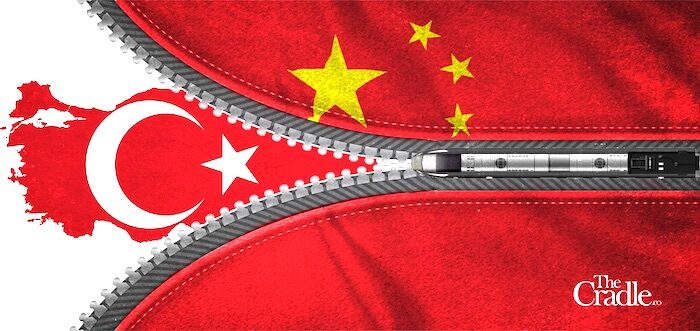
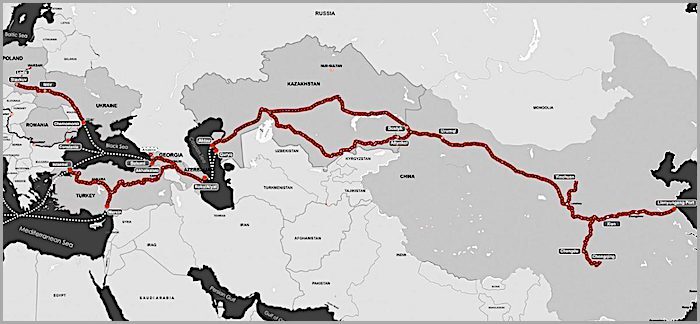
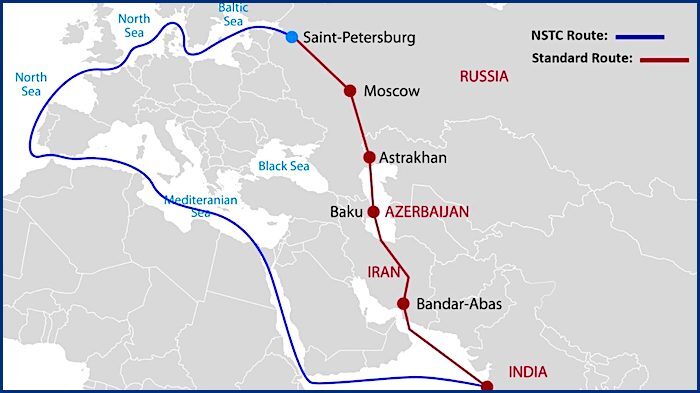
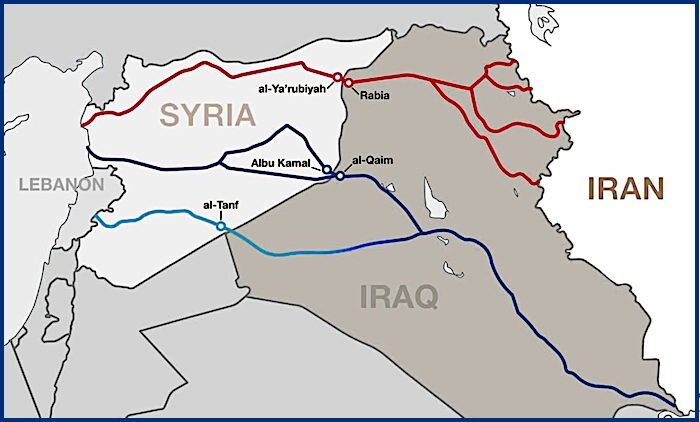
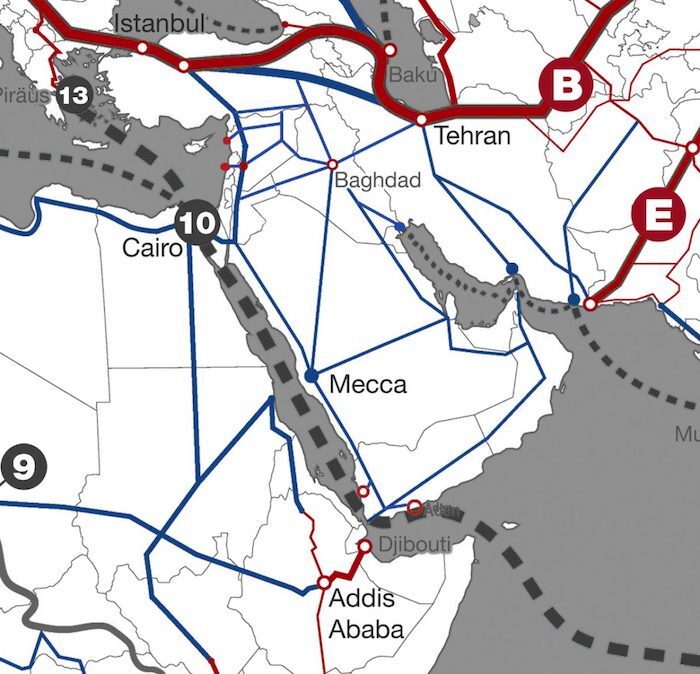



The already existing China to Germany (a.k.a. YuXinOu) railway runs via Kazakhstan, Russia, Belarus and Poland, whereby containers only need reloading twice due to changing track gauges.